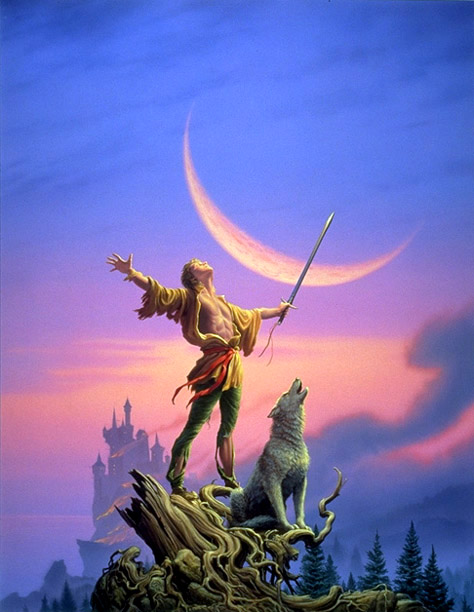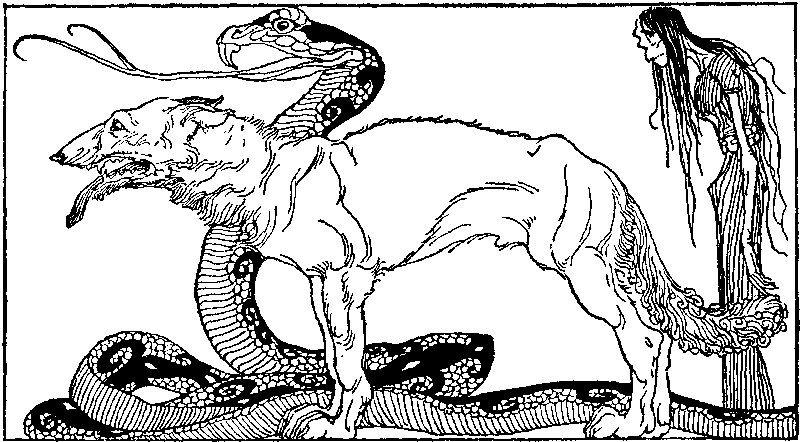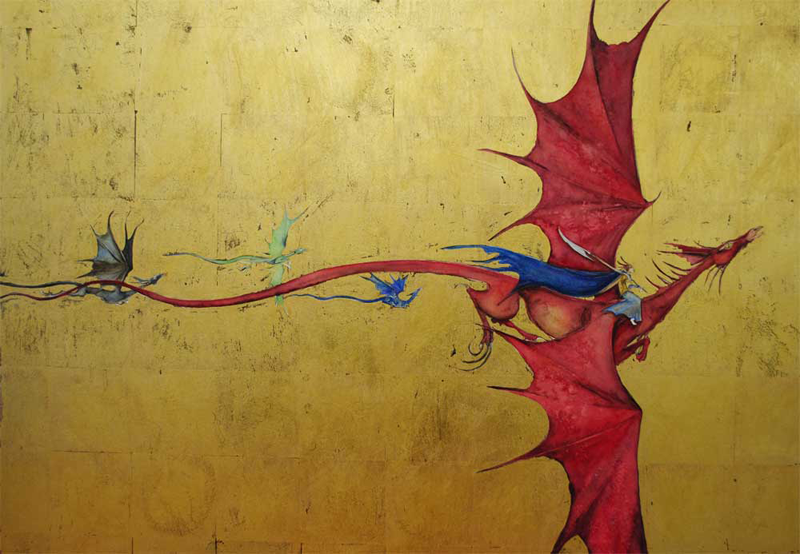Sorry, the comment form is closed.
I just finished Robin Hobb’s latest book, Fool’s Assassin. I’m going to review it but I’ll warn you when I enter spoiler territory. This book begins a third trilogy starring her beloved duo, Fitz and the Fool. I’ve been a big fan of these two since I first read the Farseer trilogy in the late 90’s. Strangely, however, this will be the first time that I’ll have to wait to read the installments in a Robin Hobb trilogy. I didn’t started any of her previous series until they were complete. It’s going to be a difficult wait. Fortunately Robin Hobb has been steadily finishing about book a year for a couple decades now.
Michael Whelan’s cover for Royal Assassin, the second book starring Fitz.
The pacing of Fool’s Assassin accelerates exponentially. Years pass by at the beginning as we gradually get reintroduced to aging characters and meet new ones. There are a few surprises but 78% percent of the book is slow but powerful emotional arcs. By now, these characters are my old friends, so I enjoyed it immensely. Robin Hobb excels at using first person POV to make her readers deeply invested in the strong feelings of her characters. Incrementally getting to understand the hopes and fears of a middle-aged Fitz and his loved ones makes it all the more excruciating when long-simmering background plots violently flood their lives. The last three chapters of Fool’s Assassin devastated me. While cliffhangers are exciting and send me to forums and on rereads to speculate on what could happen next, they can be cheap thrills. After reading all of Robin Hobb’s published books, I think that endings are one of her weaknesses. The only one that truly satisfied me is the ending to the Tawny Man trilogy.
When I heard that Fool’s Assassin was coming out, I decided to completely read through the interconnected trilogies and quadrilogies of Robin Hobb’s Realm of the Elderlings (RotE) mythos. These series focus on different protagonists and regions on the same fantasy continent, switching between first-person and limited third-person POV. Previously, I had only read the books starring Fitz and the Fool, but at the recommendation of friends, I decided to read the others as well, and I’m glad I did.
One uncommon aspect of the RotE is that some characters have fluid genders. Fantasy is all-too often a traditional genre that tells repetitive stories in iterative settings. Because the tropes are so well worn and the genre often relies on the authority of kings and other patriarchs, characters that don’t fall into predefined gender roles and threaten that masculine order are often seen as enemies. An example from one of fantasy’s headwaters, myth, is Loki. Loki is the brother of Thor but also shapeshifts into a mare and gives birth to an eight-legged horse. Ze presents as both a man and a woman. Like Loki’s sex, his allegiance to the Aesir is in flux – sometimes ze helps them but sometimes ze thwarts, deceives, and kills them.
Some of Loki’s other children by Willy Pogany. Here’s a family tree for Loki that shows how he switches between mother and father.
I’m going to reveal some spoilers for Robin Hobb and Robert Jordan books from here on out, including Fool’s Assassin in my final paragraph.
In contemporary fantasy, we can look at the Wheel of Time (WOT). The WOT has an interesting premise. Men and women can control different types of magic and an evil god has tainted the male magic, driving all wizards into destructive madness. Because of this, the world is a matriarchy. Women have many privileged positions in society and men are stereotyped as lazy, “wool-headed” gossips. People don’t trust men because any one of them could spontaneously and uncontrollably access their tainted magic and go insane. One of the themes of the series is progressive – men and women can accomplish more when they work together. But what makes the WOT problematic, beyond some fetishistic spanking and male-gaze-focused bath scenes, is the deep gender essentialism that Robert Jordan depicts. All men and all women act the same in many different situations. In a cast of thousands, there is one character who is gender fluid, Halima. But ze is an unrepentant villain. Halima presents as a woman but uses the male magic because ze is a male soul that the evil god reincarnates in a female body. The WOT would have been more interesting if Robert Jordan had explored the implications of his gendered metaphysics further and included some trans magic-wielders. I would have been fascinated by a subplot where a man can access the female magic and tries to train with the witches instead of the wizards. Or a subplot where a woman goes insane because she unwittingly channels the tainted male magic.
In the RotE, one of the key characters, the Fool, has a fluid gender identity. Through Fitz’s eyes, the Fool is a man. But other characters see the Fool as a woman. The Fool presents both male and female gender identities through the books in which ze appears. Robin Hobb takes great care to never have the Fool appear naked in front of another character in her stories and she refuses to answer this question in interviews. Whenever Fitz questions the Fool about zir sex, the Fool asks why it matters to him so much.
This gender fluidity extends to the mythology and magic of the RotE. In the Liveship Traders trilogy, we learn about the god Sa, who has male and female aspects. There is an interesting parallel here to Fitz’s binary gods, El, a sea god, and Eda, a land goddess. Perhaps El and Eda are just two faces of Sa. Men, women, and gender-fluid people can learn the same types of magic in the RotE. In Fool’s Errand, Fitz and his prince, Dutiful, encounter a strange, powerful being while they are lost teleporting via magic. This being shelters them and sends them home. To Fitz, who was separated from his mother at a young age, this being feels maternal. To Dutiful, who never knew his father, this being feels paternal. Although the RotE fans debate the identity of this being, zir double gender identity makes me hypothesize that this is Sa zirself.
Jackie Morris’s cover art for Blood of Dragons, the concluding book in a RotE quadrilogy.
Fool’s Assassin adds more layers to the ambiguous nature of gender in RotE. In this book, we learn that the Fool and zir villainous former teachers are searching for an “unexpected son,” foretold in prophecy. In the RotE, prophecy is a potent force that accurately predicts possible futures in obtuse language. But, by the end of the book, it appears that this son is actually a daughter of possibly non-binary parentage. A key component of the magic system is that different sentient species can change and become more alike by interacting and especially exchanging bodily fluids. The most prominent example of this is dragons and humans. The humans grow scales, live longer, and become eldritch Elderlings. But when dragons spend a lot of time around humans, some of their offspring may be Others – squat, scaled frog people that the dragons call abominations. Fitz and the Fool spend a lot of time together and at the end of the Tawny Man trilogy, their souls briefly switch bodies. Although Fitz never realizes it, because he can quite oblivious at times, it’s evident that his daughter shares a lot of characteristics with the Fool. Therefore it’s accurate to say that she has three parents – Fitz, Molly, and the Fool, either because of the body switch in Fool’s Fate or simply because the Fool and Fitz were so close for so long. It’s fascinating to watch Robin Hobb bring the inherent instability of gender in her magic and mythology to the forefront. The RotE is a unique, groundbreaking fantasy world. I’m excited to see how Robin Hobb further develops her portrayal of non-binary gender and parentage in future books.




I enjoyed reading your thoughts about RotE. I always found The Fools gender fluidity fascinating but I enver really put it together with in the context of the greater story. Sa’s duel nature, for instance. And Fool/Fitz body switch and Fitz/Verity body switch. Interesting stuff to chew over while I read Fools Quest!
Comment by Eleck — September 26th, 2015 @ 7:57 pm